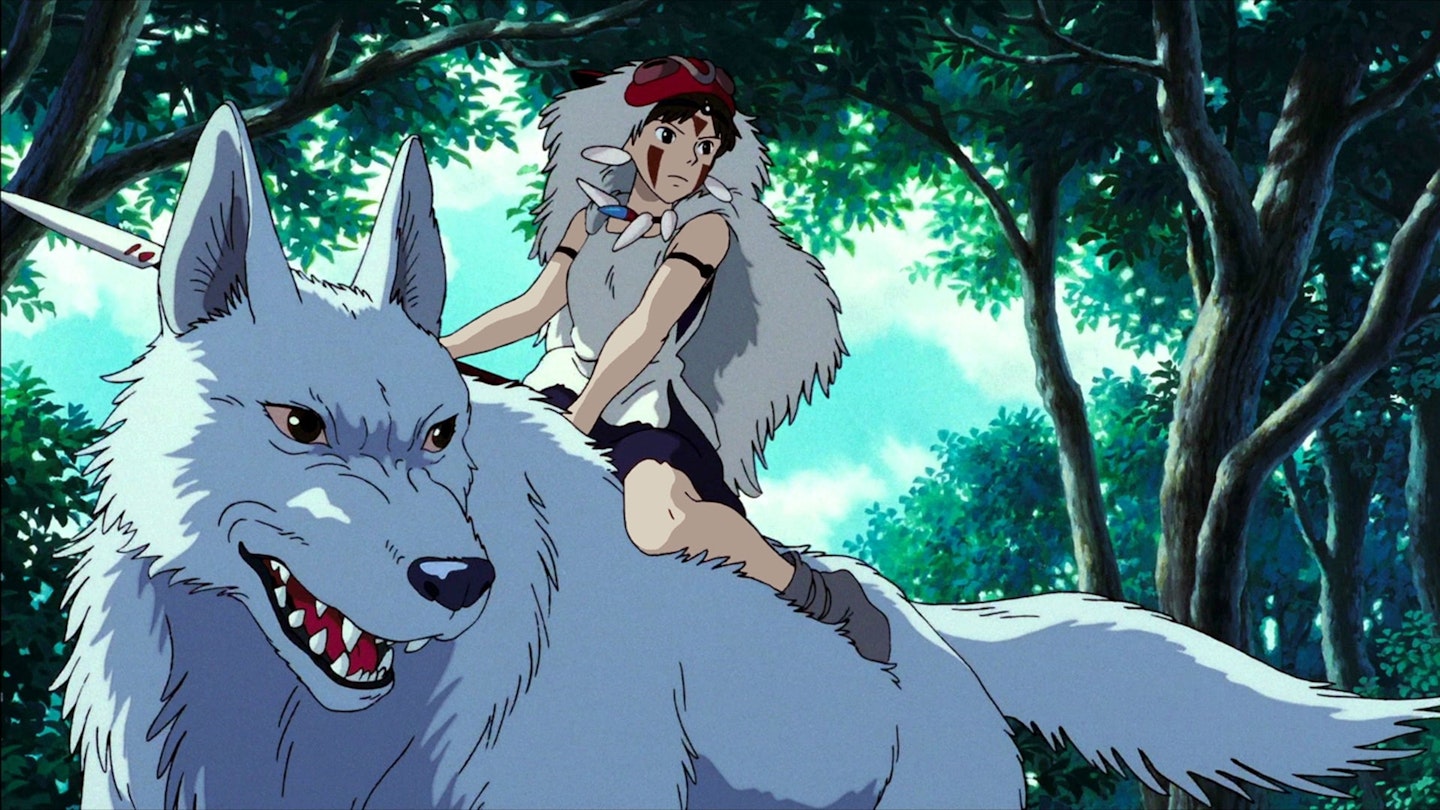Anime is bigger than ever. With dedicated streaming services such as Crunchyroll enjoying a meteoric rise, rivals Netflix and Prime Video getting in on the action with their own dedicated selection, and even Disney – the arbiter of western animation – now boasting a growing number of exclusive anime series on Disney+, the availability and popularity of Japanese animation has never been greater.
Yet it's in film where anime has enjoyed the biggest boom, with the likes of Your Name and Miss Hokusai heralding a new era of excellence in animation, adding to a canon of definitive works such as Akira and My Neighbour Totoro. But with decades of brilliance to choose from, getting started on anime – or just choosing what to watch for movie night – can be daunting.
We've plucked out the best of the best to get you started, with a selection that highlights the medium's rich diversity of genres and styles, and showcases an abundance of dazzling animation. Because anime isn't just big eyes and spiky hair – from psychological thrillers to folklore fantasies, historical biographies to post-apocalyptic futures, and sombre dramas to riotous adventures, it's a medium that truly has something for everyone. These are the best anime movies that deserve a space in any collection.
25) The Boy And The Heron (2023)
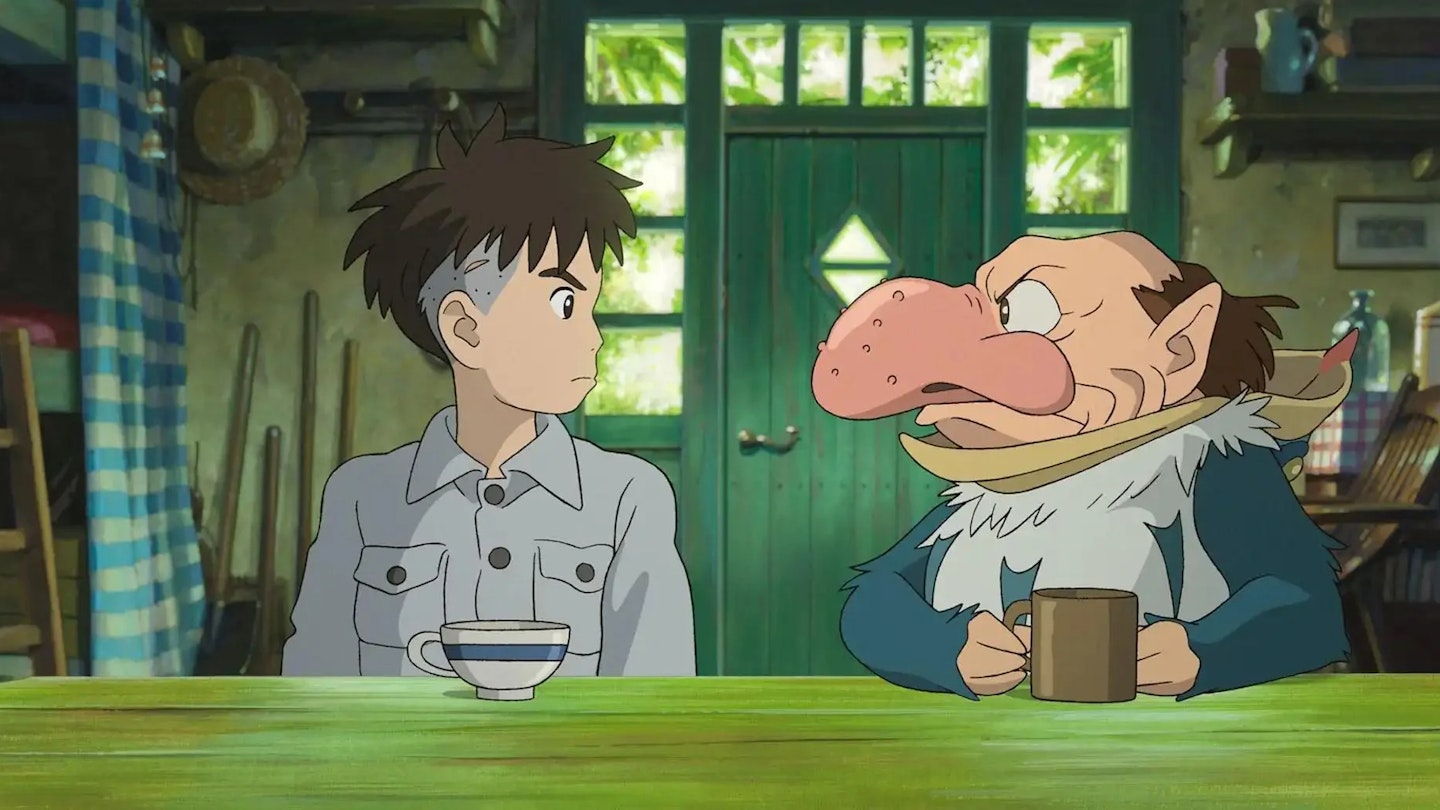
Hayao Miyazaki's latest "final" film – he previously said 2013's The Wind Rises would be his last work – is also perhaps his most biographical. Set in the midst of World War II, this grand fantasy follows young Mahito, who (like Miyazaki) is evacuated to a rural estate after the death of his mother, where he struggles to adjust (like Miyazaki) and resents his new stepmother, Natsuko. There, he finds himself drawn into a fantasy world (possibly like Miyazaki) by a mysterious grey heron, tempting him with visions of his lost mother. As should be expected from Studio Ghibli now, it's replete with fanciful creatures, strange imagery, and beautifully detailed animation, all brought to life with a stunning score from frequent Miyazaki collaborator Joe Hisaishi, but it's Mahito's journey from surly, unpleasant youth to someone who genuinely begins to care for his new family that elevates this above most fantasy adventures. Only time will tell if The Boy And The Heron will have the cultural staying power of some of Miyazaki's other works, but having already won the director his second Oscar and a slate of other awards, it's already earned its spot as the newest entry on this list.
Read the Empire review here.
24) Redline (2009)
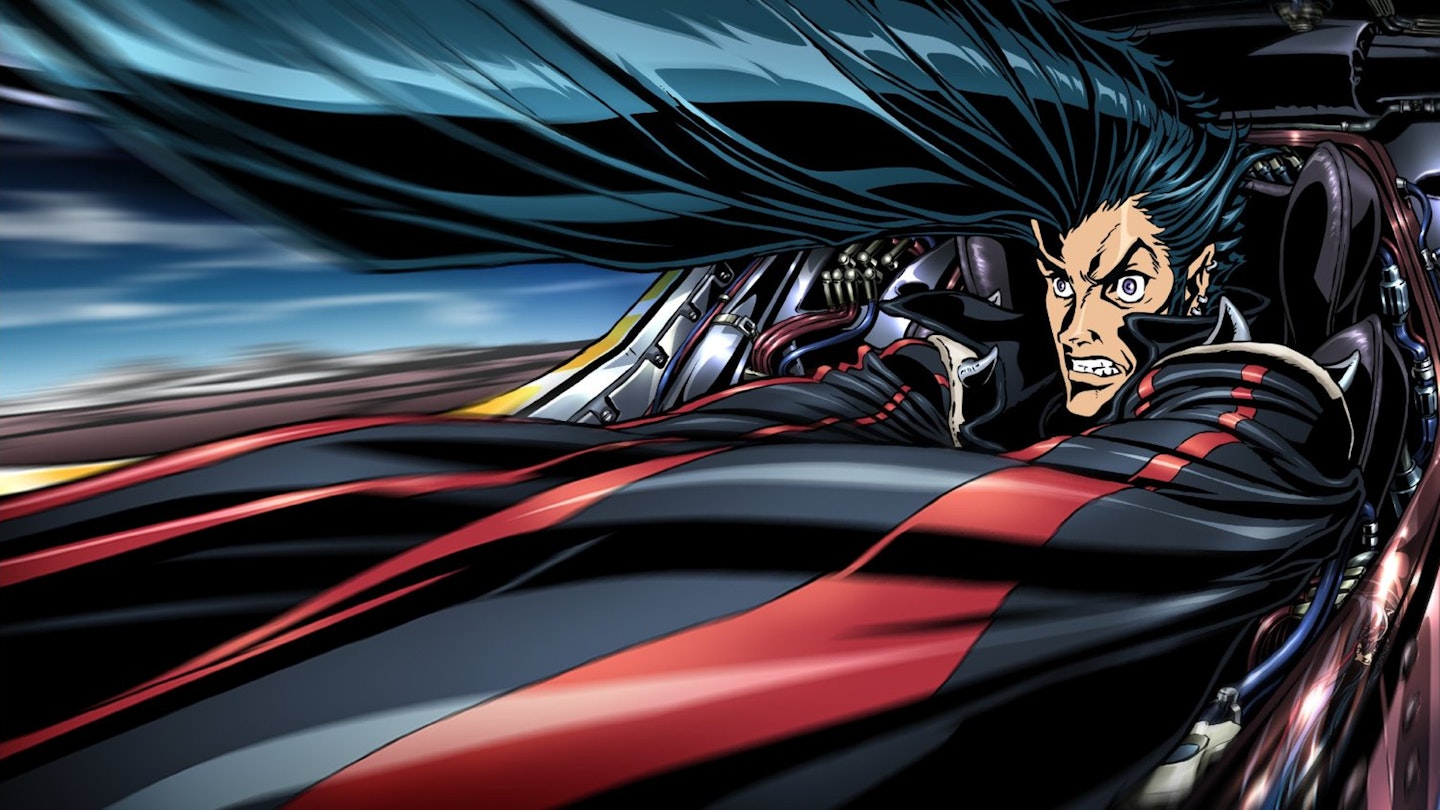
Following Joshua "Sweet JP" Punkhead as he tries to win the universe's most dangerous elimination race, armed only with a souped-up super-car and the galaxy's biggest pompadour, Redline revs up its initial premise into an interplanetary battle for survival against insane alien robots. In short, it's utterly bonkers in the best possible way, with director Takeshi Koike going absolutely buck wild on the animation front. The sight of impossible vehicles tearing up alien planets, brought to life with ultra-stylish flourishes and a wilful ignorance of physics is almost unmatched, and it's all backed up by a killer soundtrack. Think Wacky Races meets Speed Racer meets Mad Max: Fury Road meets Akira and you're still only about a quarter of the way to imagining the non-stop visual adrenaline rush that is Redline.
23) My Neighbour Totoro (1988)
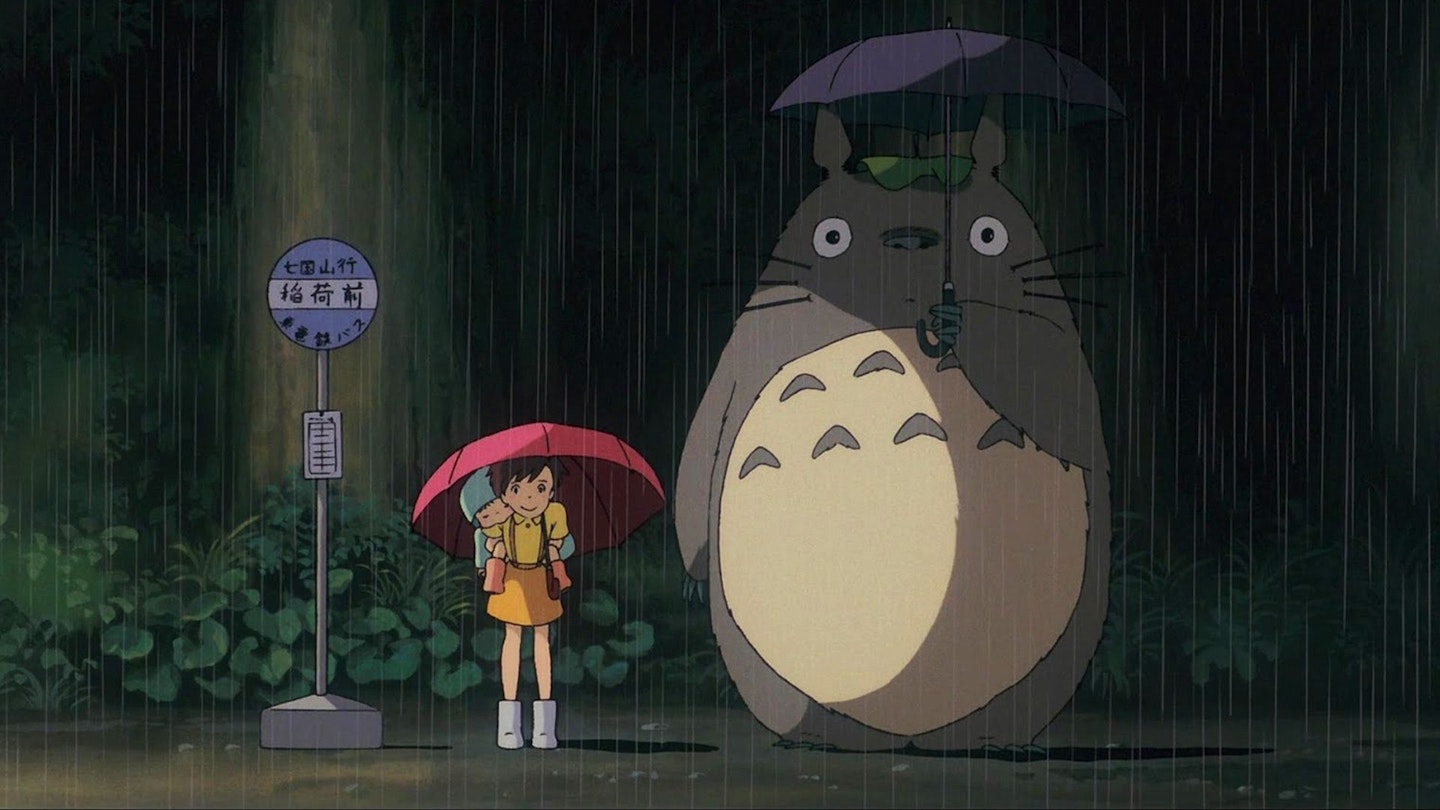
A candidate for Miyazaki's most sedate and cosy film (only Kiki's Delivery Service might snatch that crown), My Neighbour Totoro is centred on two young sisters, Satsuki and Mei, as they move to the countryside while their mother recuperates from a long illness. Exploring their new surroundings, they begin to encounter a host of strange creatures and forest spirits, from the adorable susuwatari soot sprites hiding in the nooks and crannies of their rural home, to the iconic Totoro, a gentle giant who leads the girls into a world of wonder. Despite its gentle pacing, there's a genuine sense of childlike delight crammed into every frame of My Neighbour Totoro, but also an edge of sadness as the sisters fear for their mother's health – a pinch of darkness that's helped endear the film to generations of viewers. It isn’t hard to see why Totoro is Studio Ghibli's mascot.
Read the Empire review here.
22) Wolf Children (2012)
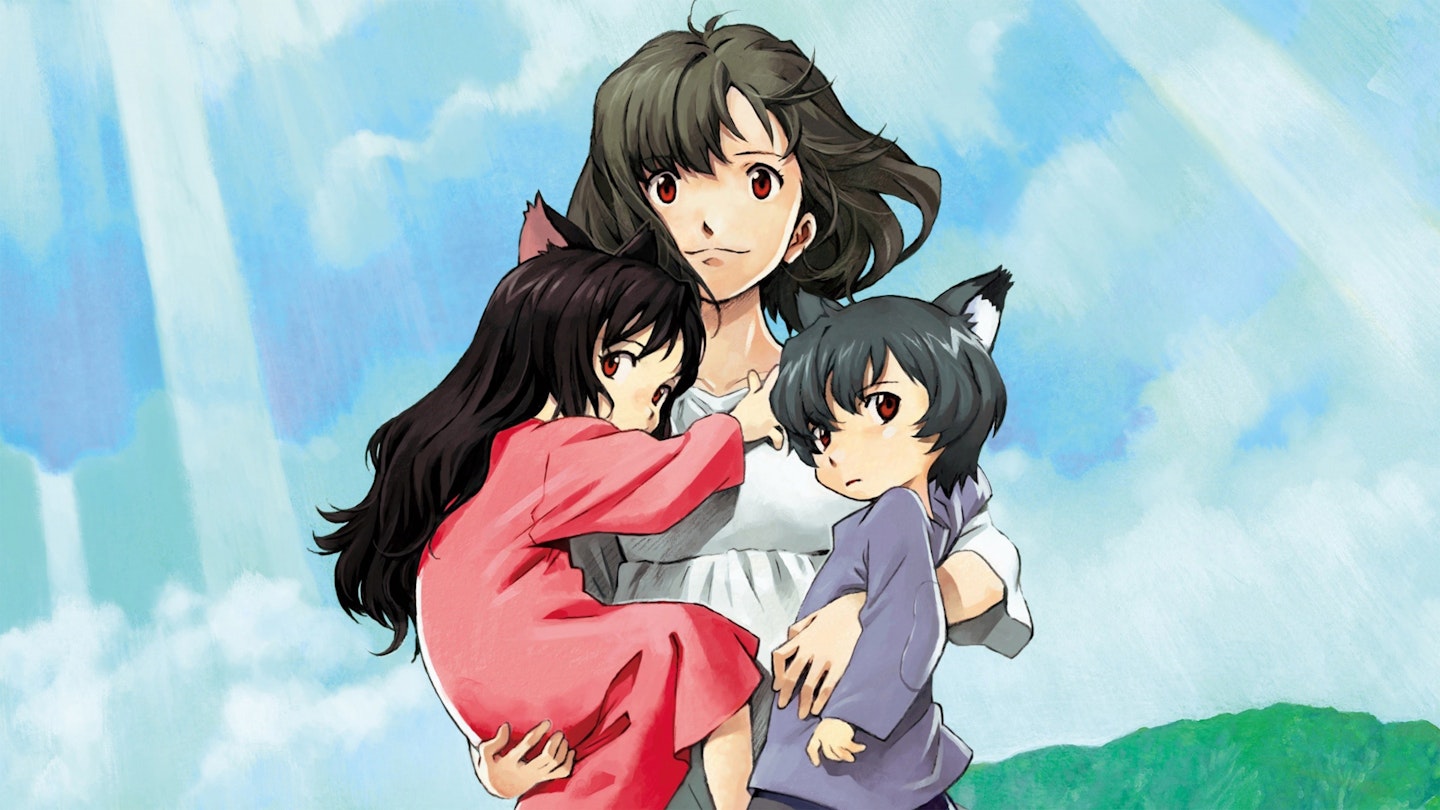
Single mother Hana is raising her two young children after the death of their father. This already difficult situation is made even tougher when the kids, Yuki and Ame, take after their secretly lycanthropic father, and begin uncontrollably shifting into wolf forms. Forced to relocate the family to a remote village for privacy, Hana desperately tries to protect her children from a world that doesn't understand them, while Yuki and Ame are themselves torn between their dual natures. A delicately animated modern fairy tale, Wolf Children packs plenty of powerful emotional punches as it explores the challenges and rewards of parenting. A poetic, romantic and beautifully animated tale that balances its saccharine elements with somber notes and a delightful hint of weirdness.
21) Rebuild Of Evangelion (2007-2021)
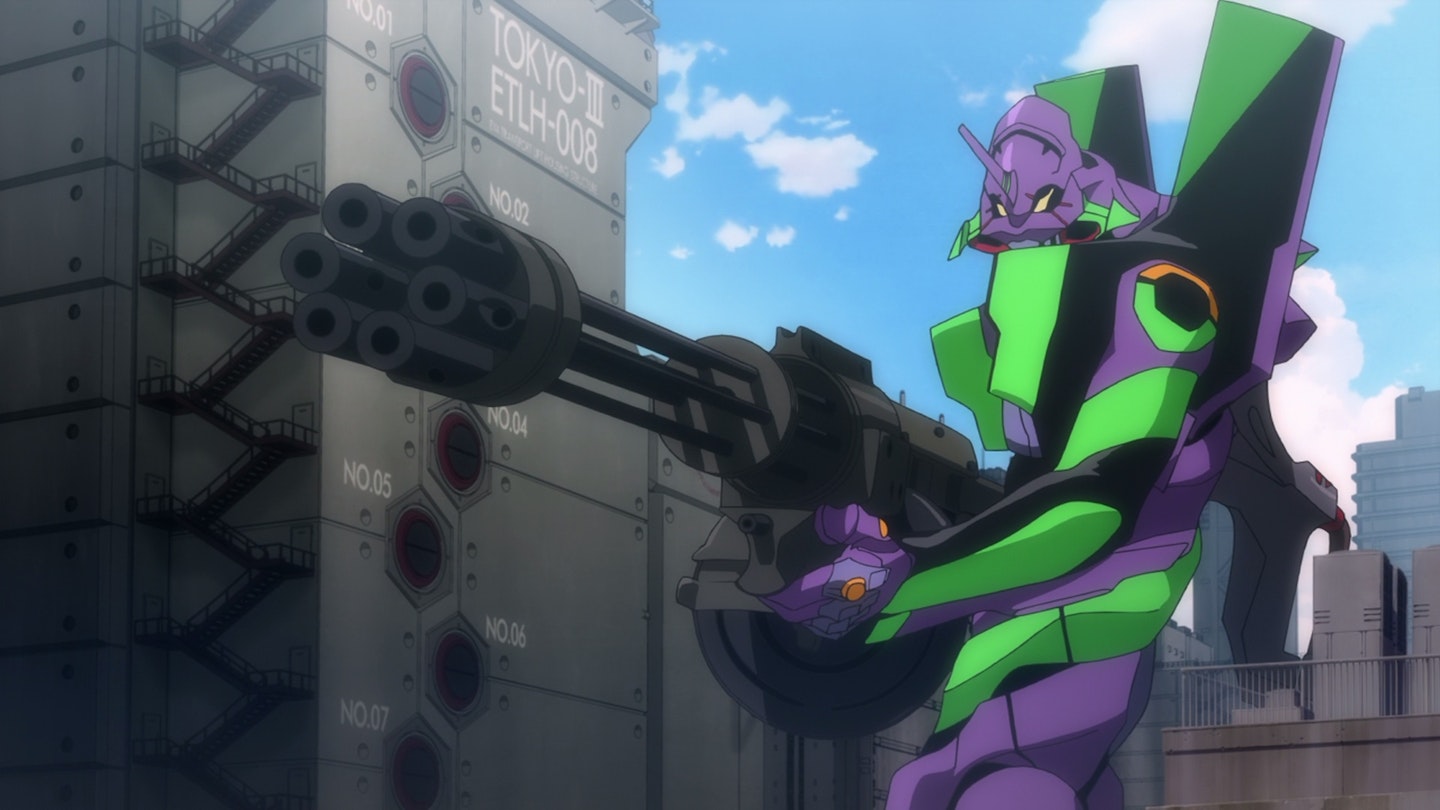
Are we cheating, cramming four movies into one slot? Yes, but director Hideaki Anno's reimagining of his legendary anime TV series Neon Genesis Evangelion amounts to a magnificent piece of cinema. Over the tetralogy, Anno has far more space – and budget – to refine his original story of young robot pilots holding back the end of the world, taking viewers from the almost coming-of-age tale of 2007's Evangelion: 1.0 You Are (Not) Alone, which introduces the shy, uncertain Shinji Ikari as humanity's last hope, through to 2021's metaphysical finale, Evangelion: 3.0+1.0 Thrice Upon a Time, throwing in new characters and expanded plot points along the way. Yet what really makes Rebuild stand out is its drawing on Kabbalistic apocalyptica, Shinto cosmology, and the psychoanalytical ideas of Jung and Freud to craft something far more complex than a mere mecha-versus-monsters punch up. Reborn with bleeding edge animation, this version of Evangelion is the ultimate way to see in the end times.
20) Promare (2019)
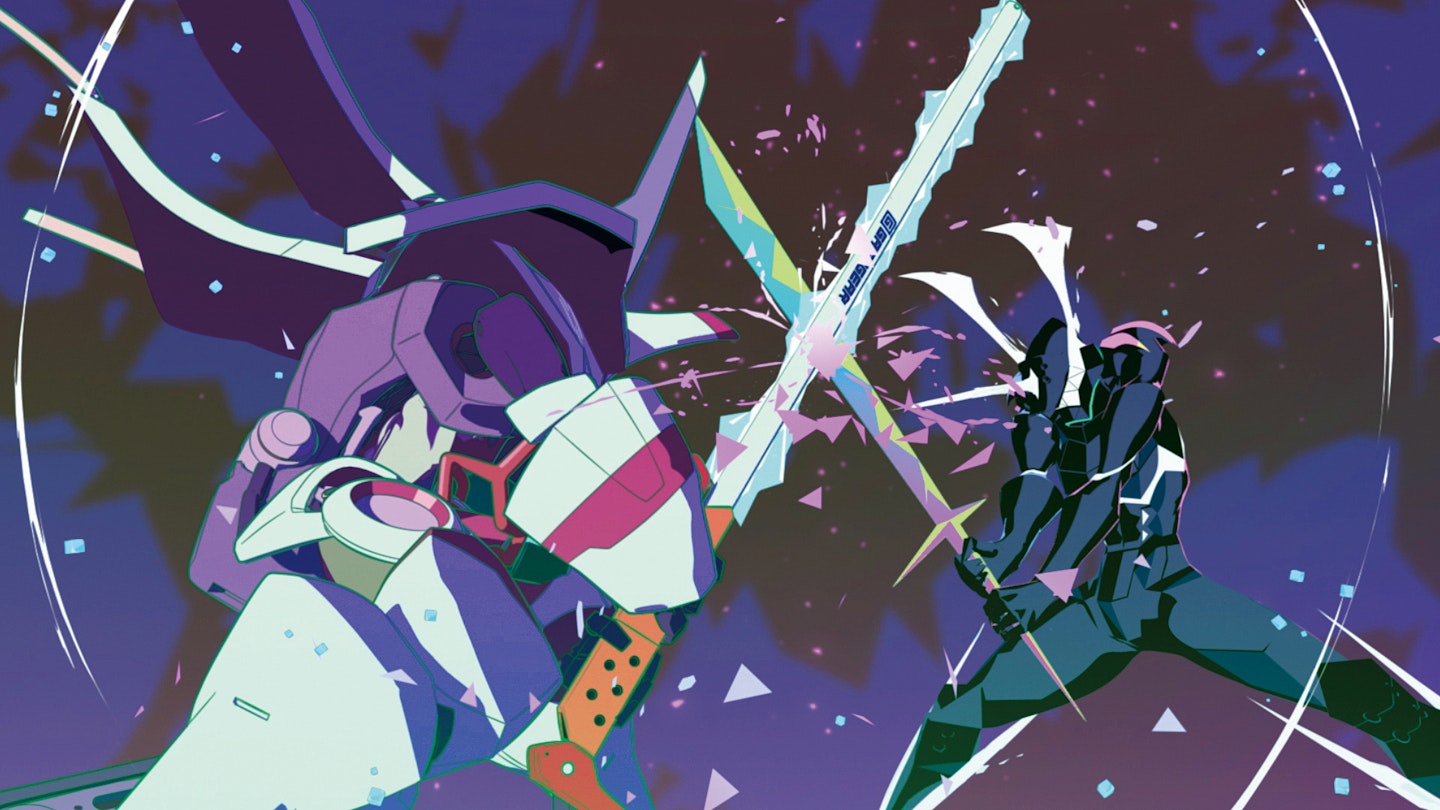
Decades after humans begin to mutate into apocalyptically powerful pyrokinetics known as "Burnish", an organisation known as Burning Rescue exists to counter these walking fire hazards. Galo Thymos is one of those firefighters, an ace pilot of the advanced mechs needed to combat the Burnishes' powers, but when he crosses paths with Lio, a Burnish resistance fighter, the pair are drawn into a conspiracy that might set the whole world ablaze. A blisteringly exciting piece of animation from Studio Trigger, Promare is a hyper-kinetic flurry of action drenched in neon and pastels, but also lands some pointed statements about prejudice and how institutional power is used. Unlike almost anything else you'll see.
19) Royal Space Force: The Wings Of Honnêamise (1987)

Framed by rival nations locked in a push for technological superiority, it's easy to see the Cold War parallels in Hiroyuki Yamaga's groundbreaking slice of hard science fiction. At its heart though, Honnêamise is smaller, more personal, reflecting humanity's attempts to realise its own potential through a focus on pilot Shirotsugh Lhadatt's efforts to become the first man in space. Released at the forefront of anime's growing maturation – Yamaga and his collaborator Toshio Okada had long argued for the medium to escape its navel-gazing tendency to cater to an existing fanbase – Honnêamise dazzled with startlingly detailed animation and a willingness to tackle deeper themes surrounding religion and culture. Although some elements haven't aged well – its approach to gender and relationships are especially questionable – and despite flopping upon release, Honnêamise has earned its place as a foundational anime text.
18) In This Corner of the World (2016)
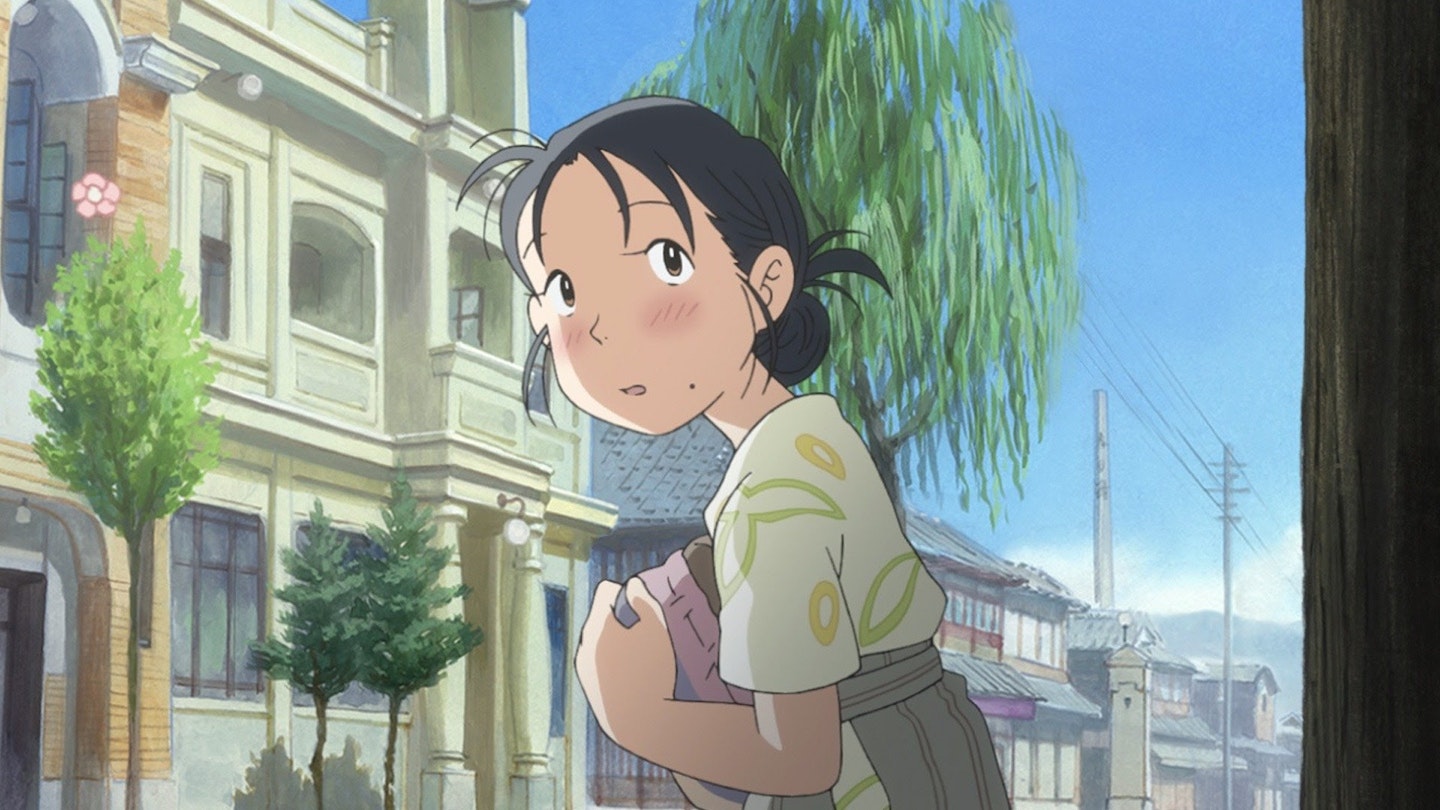
Based on the manga by Fumiyo Kōno, this takes an almost episodic approach to exploring civilian life in Japan over the course of World War II, from its mounting tensions through to post-war American occupation. It's no grand, sweeping, geopolitical saga though, instead rooted in the quiet daily life of Suzu, a young bride who moves to live with her new in-laws in the naval port city of Kure – ominously, for the audience, only 15 miles from Hiroshima. Meticulously accurate to its period setting, down to the fashions, locations, and architecture, and all brought to life with richly detailed hand-drawn animation, In This Corner of the World presents a strangely warm, slice-of-life view of some of history's bleakest events.
Read the Empire review here.
17) Weathering With You (2019)
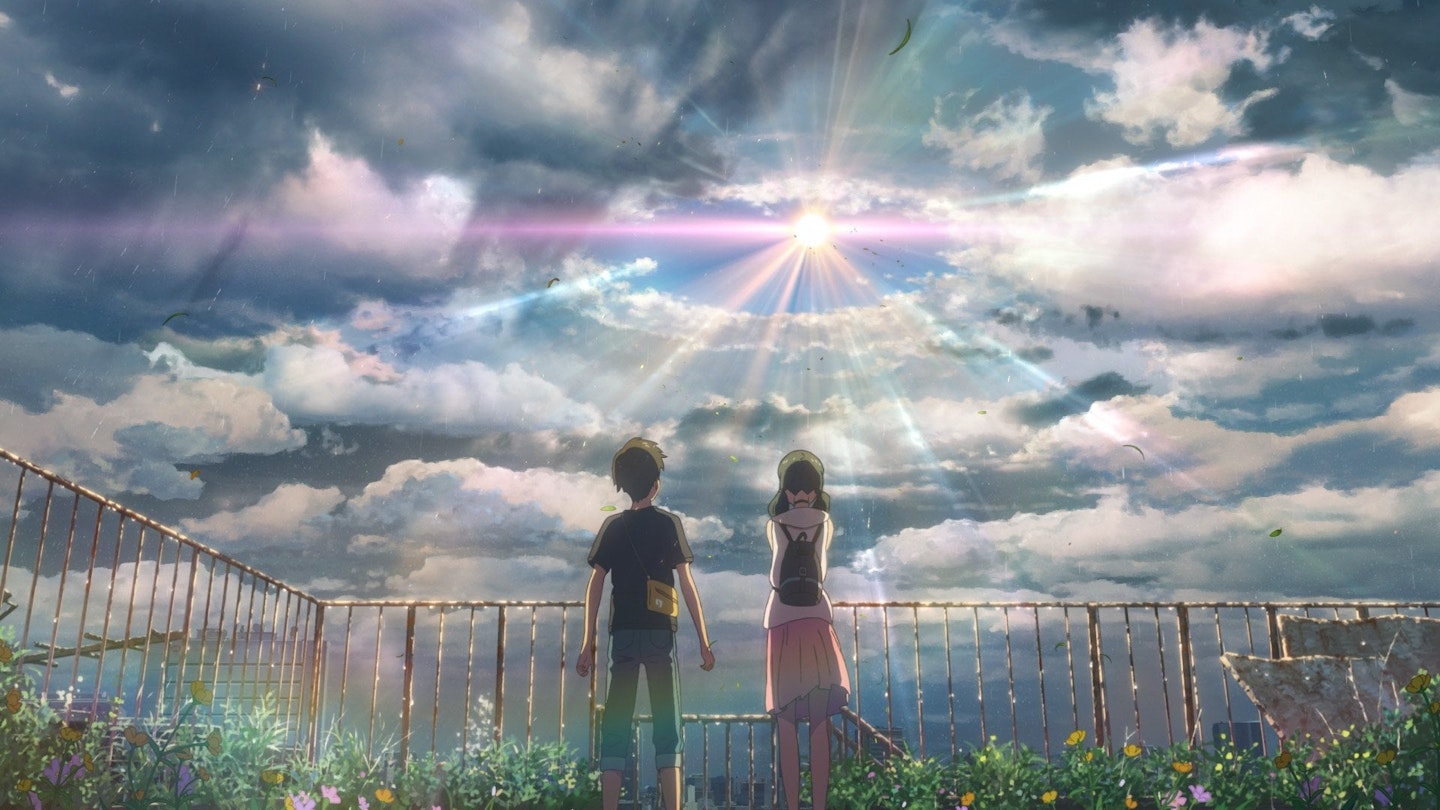
Hodaka is a teenage runaway, fleeing his hometown for the anonymous bustle of Tokyo. Hina is an orphan, left to raise her younger brother alone. That alone is fertile ground for what could be an intense romantic drama, but writer-director Makoto Shinkai adds a mesmerising dash of magical realism to proceedings with Hina's strange ability to influence the weather – less a superpower, more a metaphorical mash-up of teenage emotional turbulence and climate crisis anxiety. But as the pair grow closer and try to use Hina's talents to forge a brighter future for them both, things take a turn for the disastrous, both personally and for the world around them. Shinkai's signature attention to detail is put to remarkable use to depict weather effects that almost defy the boundaries of animation, making for one of his most visually impressive films to date. A modern masterpiece.
Read the Empire review here.
16) Metropolis (2001)
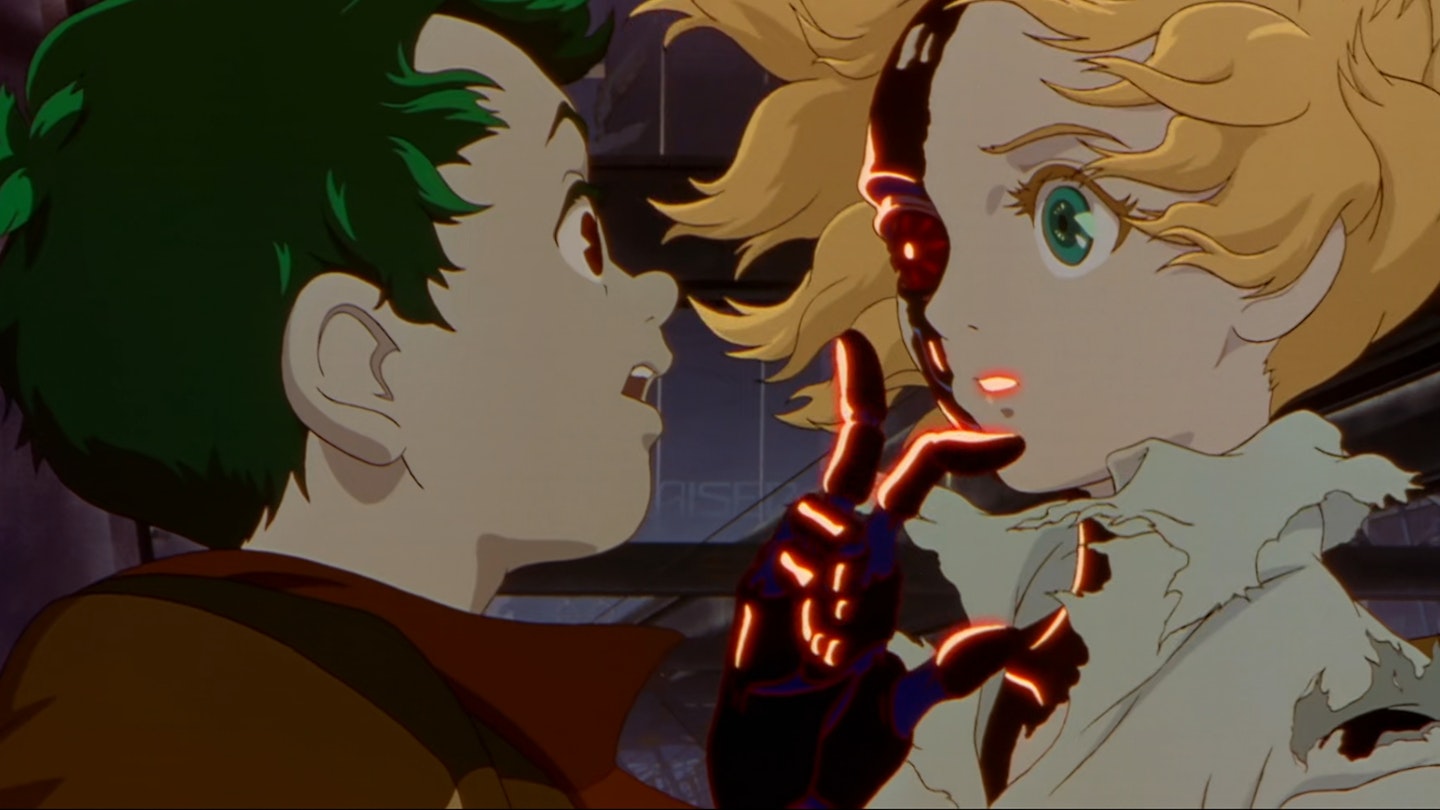
The collective work of a supergroup of anime and manga creators – based on an original 1949 story by Astro Boy creator and "God of Manga" Osamu Tezuka, with a screenplay by Akira's Katsuhiro Otomo, and directed by the mononymous Rintaro, whose decades-long career has seen him work on classics including Galaxy Express 999 and X:1999 – Metropolis is a sweeping tale of humanity, robots, class, and the nature of the soul, all wrapped in a retro-futuristic aesthetic. The heart of the movie, though, is the relationship between Kenichi and a mysterious girl named Tima, pursued by the villainous Duke Red who rules over the highly segregated Metropolis, where sentient androids slave away underground while bourgeois humans pour scorn on them from above. Although Tezuka's comic was only loosely inspired by a single image he'd seen of Fritz Lang's iconic silent Metropolis, this anime adaptation takes a few more cues from the 1927 film, chiefly in the astounding urban design of its dieselpunk world. It's as much a character as Kenichi or Tima are, an intricate sprawl with an incredible sense of verticality, making for some of the best architecture to hit film as a medium, let alone anime.
15) Miss Hokusai (2015)
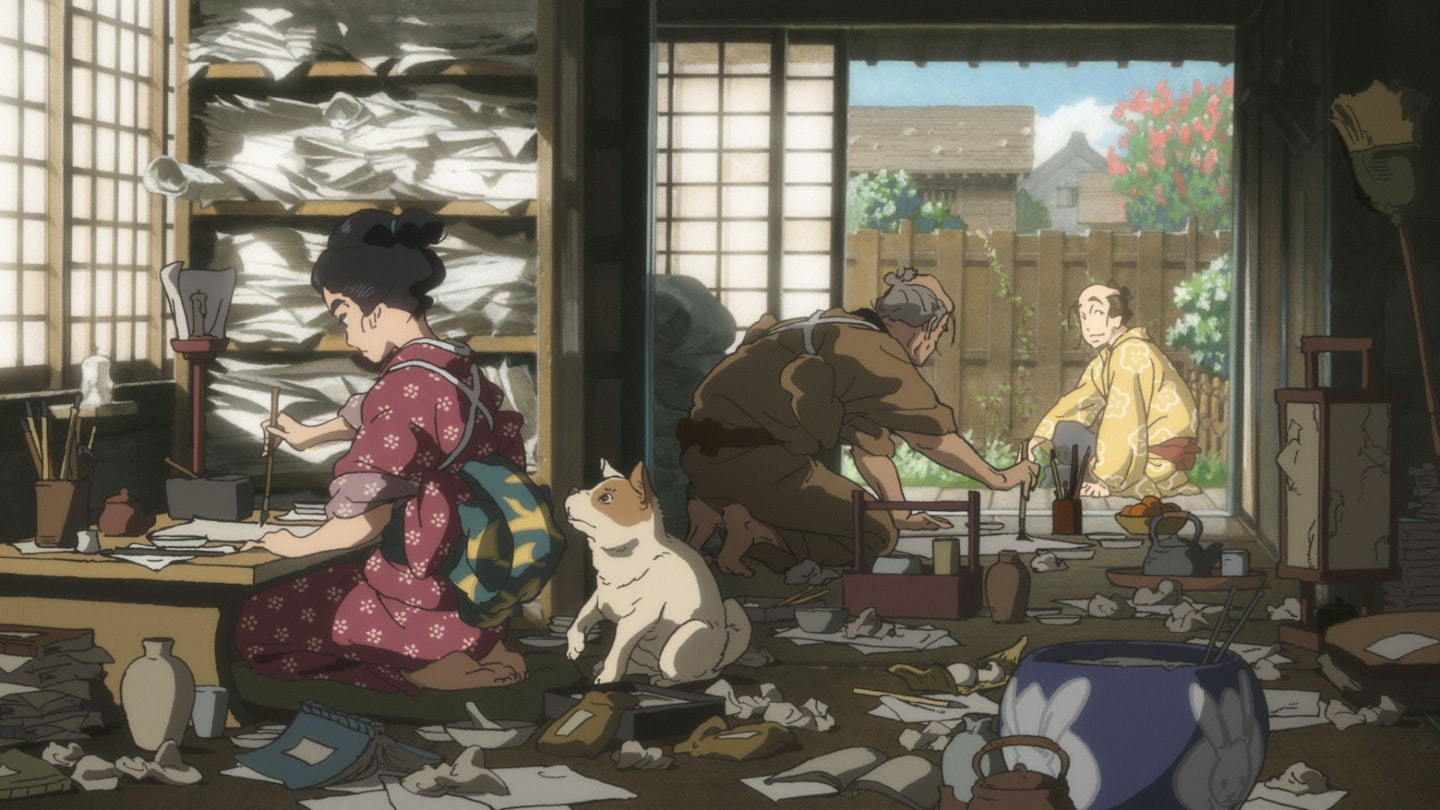
You may already know of Hokusai – the Edo period artist renowned for his stunning woodblock works such as The Great Wave off Kanagawa – but his daughter O-Ei was just as talented a creator. Animated biopic Miss Hokusai is, on one hand, about O-Ei's search for recognition, but equally about her commitment to the work itself, to finding that spark within herself that allows the creation of great art, all while caring for her ageing father. Hara presents his heroine as very much her father's daughter, throwing herself into her craft in a messy studio, having no patience or interest in the opinions of those around her. Beautifully realised and evocative of the ukiyo-e style both Hokusais mastered, this is a piece of art about art, but one that never forgets to ground everything in the messy, awkward humanity of its subject.
14) Maquia: When the Promised Flower Blooms (2018)

Beyond its arch fantasy trappings – Knights! Dragons! Castles! Magic! – this directorial debut from noted screenwriter Mari Okada is an utterly heartbreaking reflection on the joys, trials, and pains of motherhood. The eponymous Maquia is an Iorph, member of a near-immortal race, separated from her tribe in the wake of a brutal attack by outsider humans. Adopting an orphaned baby seems like an act of kindness, but as her son Ariel grows and ages, while Maquia doesn't, she has to face a loss even more profound than that of her home. While there's plenty of action over the decades-long period the film covers, this dreamily animated work is ultimately designed to rip viewers' hearts out – and it utterly succeeds. Pack tissues.
13) Suzume (2022)
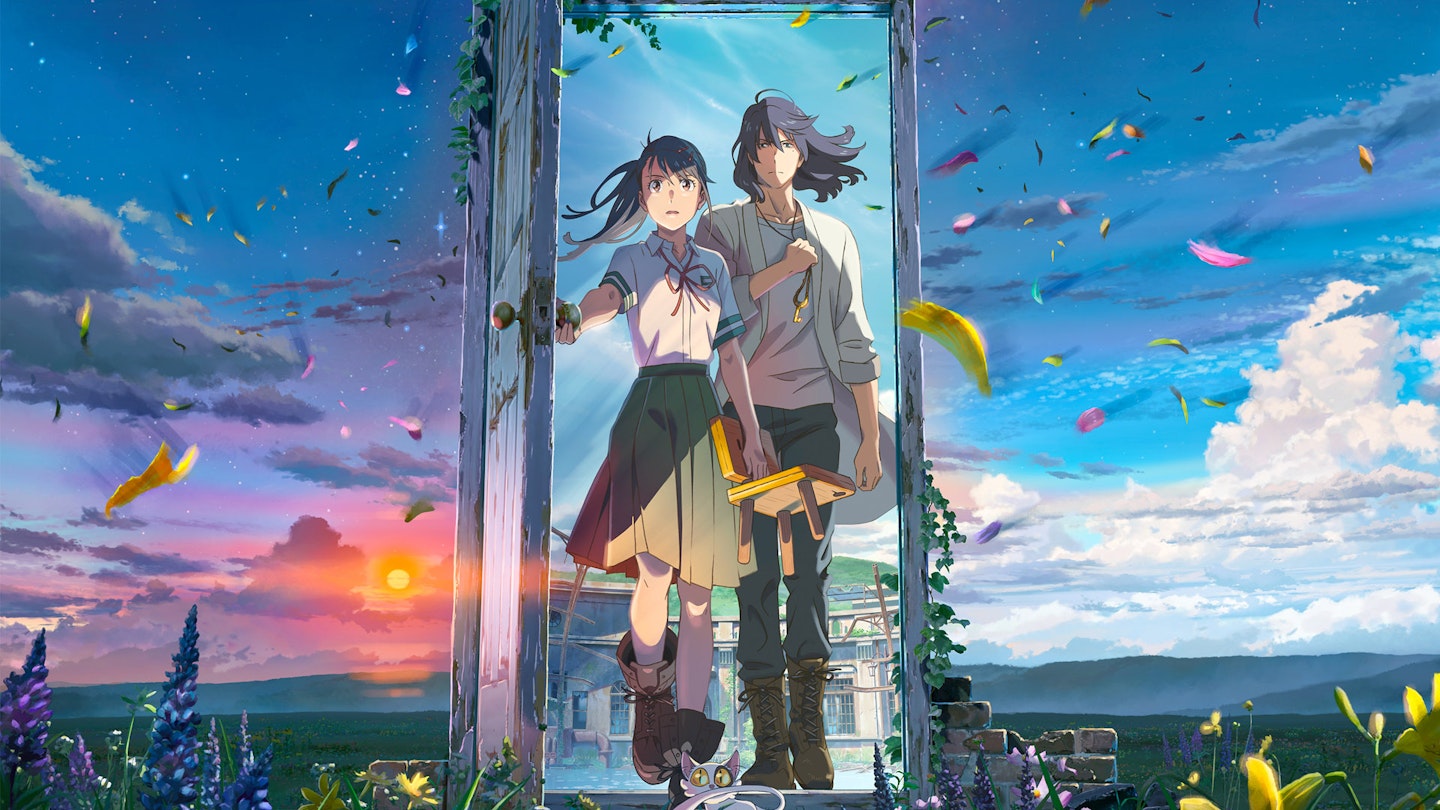
While Suzume touches on similar environmental themes to Shinkai's earlier Weathering With You, it's really a grand metaphor for the national trauma Japan has experienced since the Tōhoku earthquake of 2011. It's the tragedy that robbed titular Suzume Iwato of her mother as a young girl, leaving her directionless as a teen – until she meets handsome drifter Souta, and is drawn into a nationwide road trip to seal off the mythological embodiment of disaster itself. It's a film about community, each stop seeing Suzume and Souta crossing paths with people in some way impacted by catastrophes big and small, and is more surreal than most of Shinkai's work – Souta spends most of the film magically transformed into a broken children's chair, a strange choice that has a bizarrely important pay-off – but it's hands down his most impressively animated endeavour yet.
Read the Empire review here.
12) Night Is Short, Walk On Girl (2017)
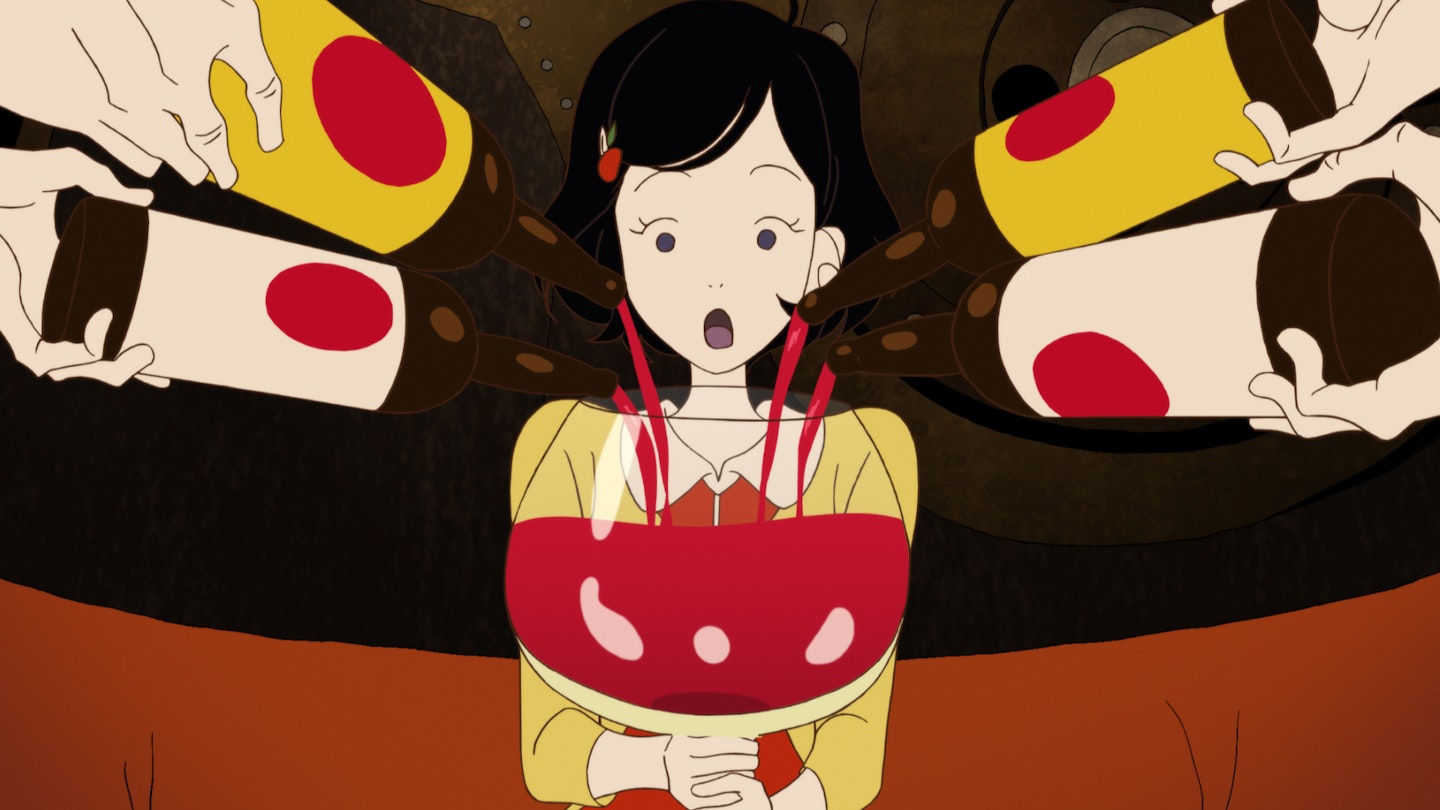
Director Masaaki Yuasa is one of the most dynamic animators working in the field today, his creations employing a rough and raw energy that eschews the soulless polish of a lot of glossier productions. Nowhere is that more apparent than in Night Is Short, Walk On Girl, a chaotic journey taking place over a single raucous night. Its unnamed protagonists – 'Sempai', an upperclassman at Kyoto University, and 'Kōhai', the female student he lusts after – tear through the city, Kōhai searching for a lost book from her childhood, Sempai contriving endless reasons for the pair to cross paths, and both barrelling through increasingly surreal, borderline hallucinatory, and possibly even supernatural situations as they go. It's a film that feels just a little bit dangerous, with the slightest edge of sleaze, and a sense that anything could happen – and with Yuasa's deranged imagination, it often does.
11) Ghost in the Shell (1995)
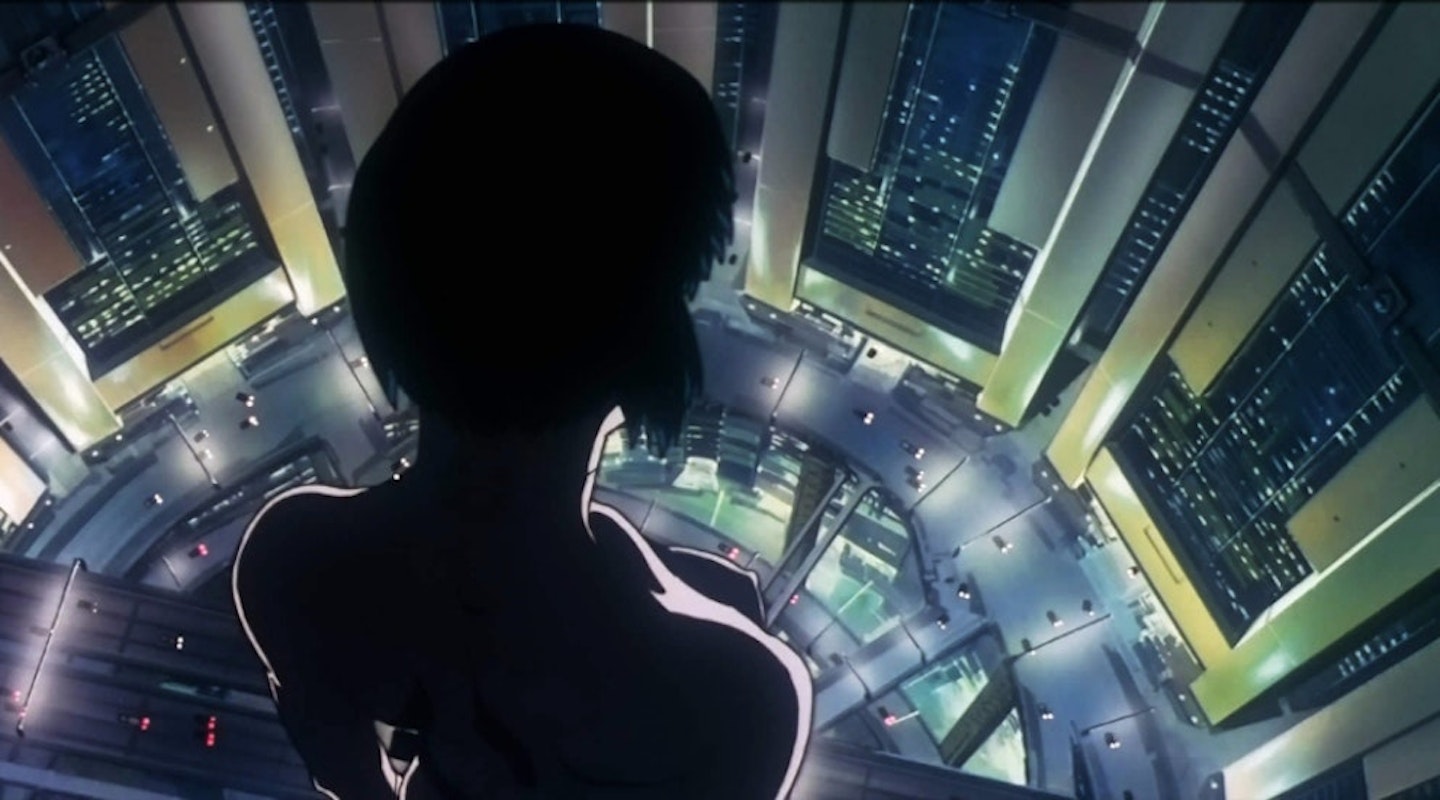
Based on a pioneering manga by Masamune Shirow, Ghost in the Shell is sci-fi – but the closer we get to its 2029 setting, and the more the real world edges towards an always online populace, increasingly viable cybernetic augmentation, and mounting digital crimes that affect millions, the more it looks like prophecy. Still, we're hopefully some way off from the kinds of cybercrimes that Major Motoko Kusanagi and her squad mates in special ops unit Section 9 investigate – like innocent people with full-body prostheses being taken over by a mysterious hacker known as Puppet Master, forced to pull off assassinations and reshape society. Oshii's film is part action, part futuristic crime procedural, and part philosophical reflection on where a person's true self resides, but it’s never less than thought provoking. Undoubtedly another of anime's foundational texts in the West – infamously influencing the Wachowskis on The Matrix, amongst many others – the only reason this doesn't place higher is that its own follow-ups, chiefly the superb Stand Alone Complex TV series, have supplanted it as the definitive interpretation of Shirow's themes and ideas.
10) Your Name (2016)
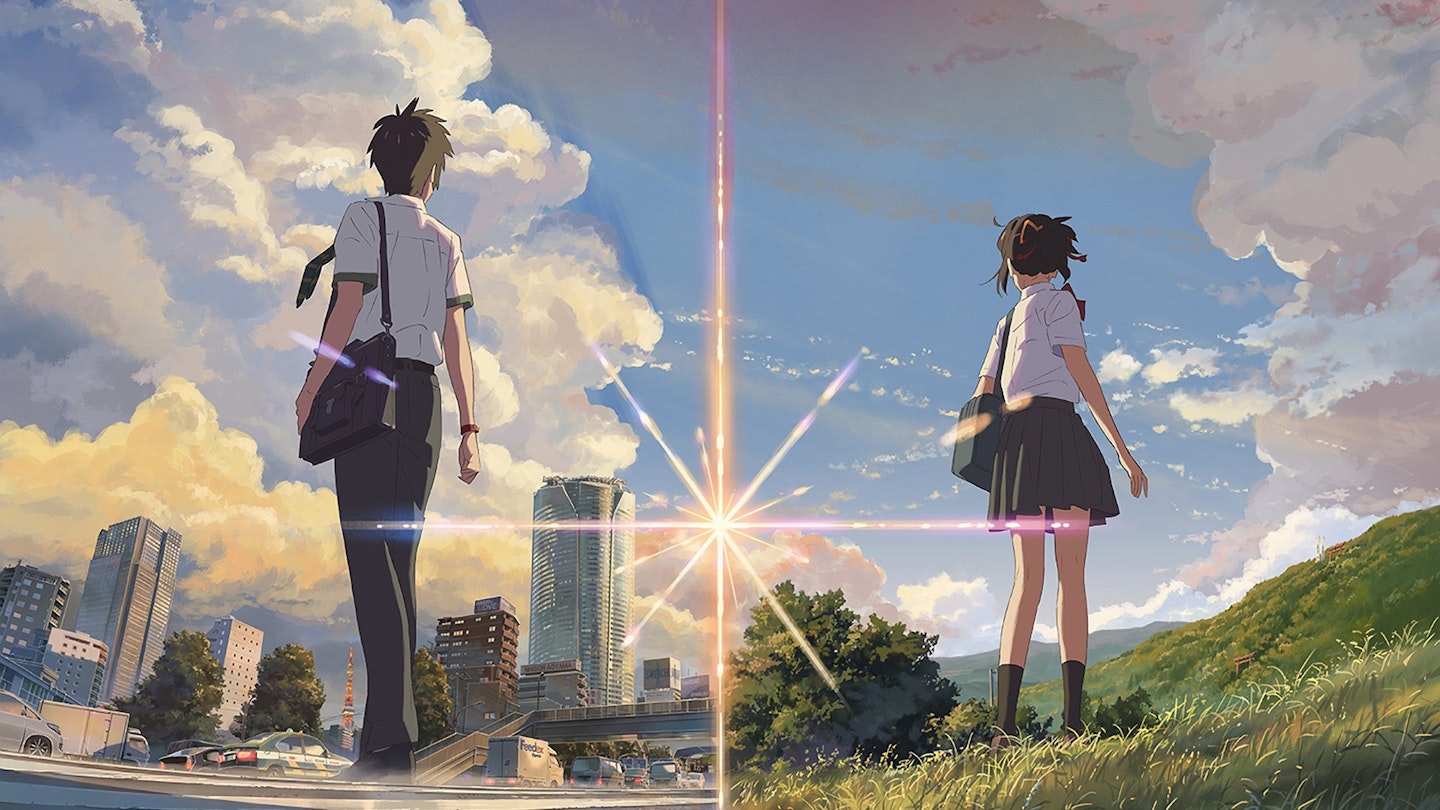
In another world, Your Name would be a comedy – that's what viewers expect from anything involving a body-swap, right? Under director and writer Makoto Shinkai though, when rural girl Mitsuha and Tokyo boy Taki begin inexplicably waking up in each other's bodies, it's the start of a far grander tale of sweeping romance and shared destiny. Shinkai pays as much attention to the quiet beauty of Taki and Mitsuha's personal lives, exploring how the pair influence each other for the better without ever meeting, as he does to the cosmic ramifications of the thrilling twist he delivers – though that's best left unspoiled here. Visually sumptuous and powered by an incredible soundtrack from Japanese rock band Radwimps, it's no surprise Your Name became one of the highest-grossing anime films of all time.
Read the Empire review here.
9) Tokyo Godfathers (2003)
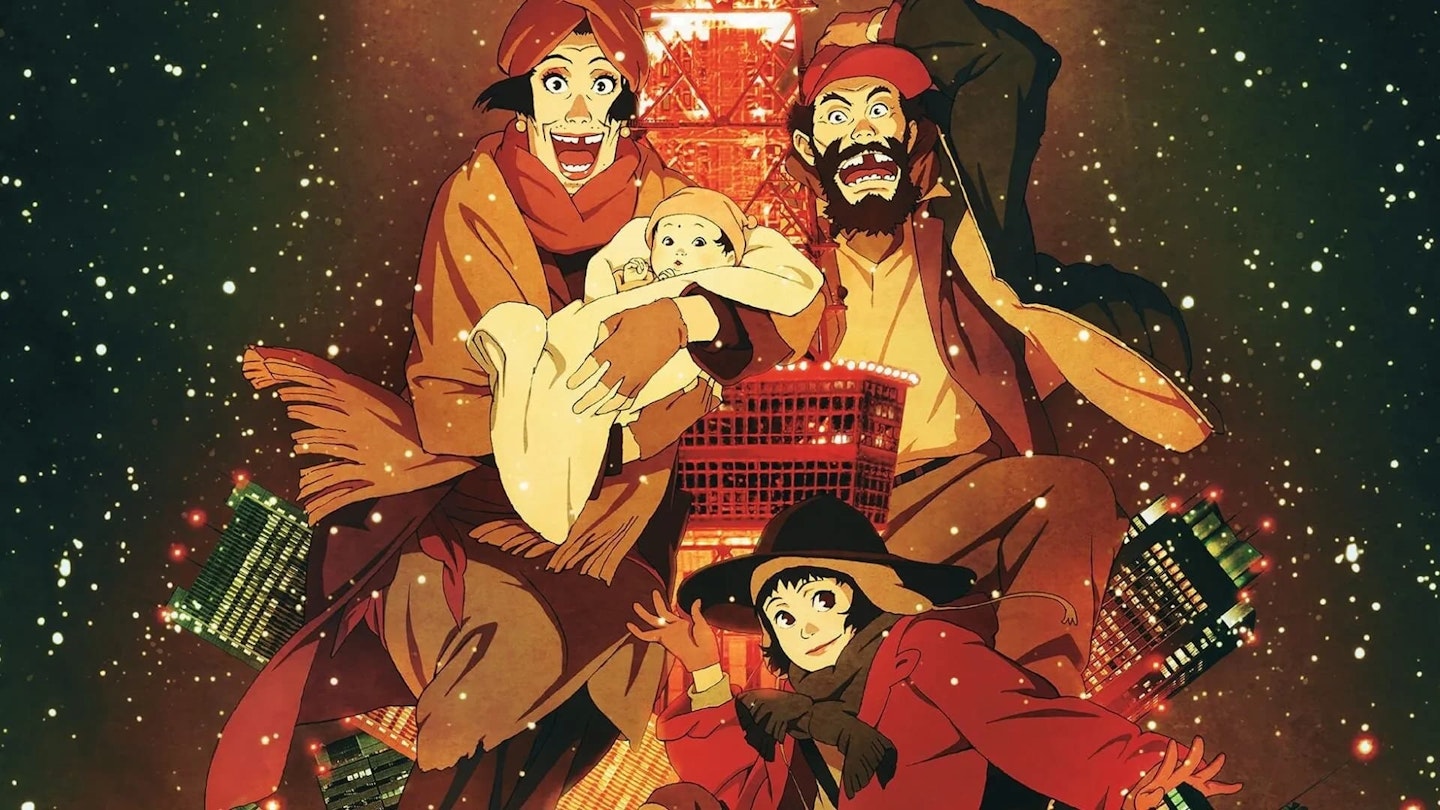
When three homeless people – alcoholic Gin, trans woman Hana, and teen runaway Miyuki – find an abandoned baby on Christmas Eve, the unlikely trio set out to find her parents. It's a quest that sees them crossing paths with yakuza bosses, dodging hitmen, and stumbling into strip clubs – not exactly your typical schmaltzy festive movie, then. Realised in director Satoshi Kon's signature realistic style and painted in a muted, dingy palette, Tokyo Godfathers surprises as a film able to flip from hilarious to heartbreaking at a moment's notice – but as the histories of its central cast are revealed, it ultimately reveals itself as a love letter to the power of chosen families. This year, skip the annual viewing of It's a Wonderful Life and give this unexpectedly uplifting holiday treat a watch instead.
8) The Tale of the Princess Kaguya (2013)
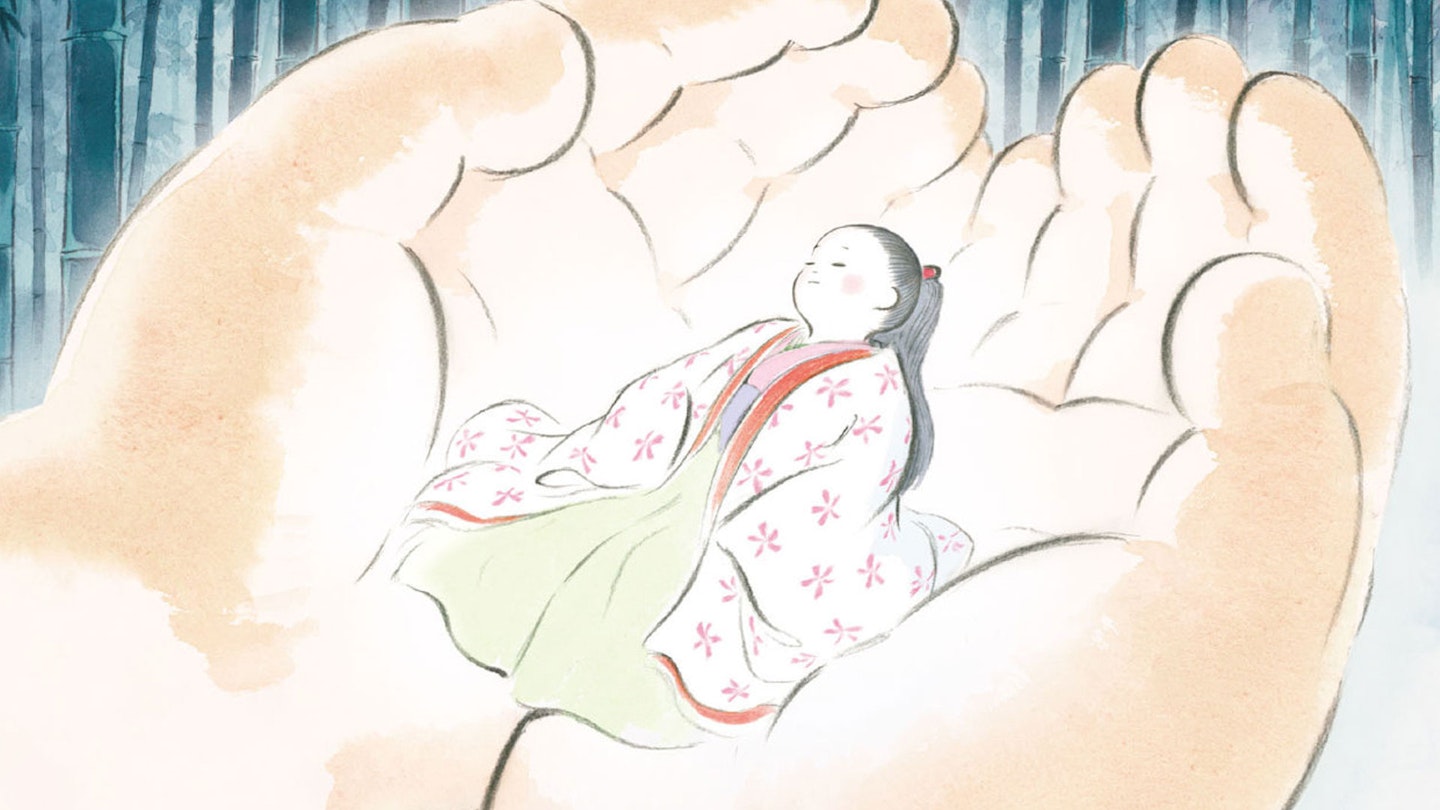
The final film from Studio Ghibli's co-founder Isao Takahata takes its inspiration from one of Japan's oldest folktales, The Tale of the Bamboo Cutter. When an old man finds a tiny baby in a bamboo stalk, he takes the divine child home to raise her with his wife. What follows is an exploration of the small wonders of a mortal life, and the abject tragedy of each one's loss, culminating in a heart-rending denouement that will hit you harder than you can ever possibly imagine. Brought to life with impressionistic brushstroke visuals and awash in gentle watercolours, it looks like nothing else the famed animation house has ever produced, making Princess Kaguya all the more impactful. An incredible legacy for Takahata.
Read the Empire review here.
7) Perfect Blue (1998)

Perfect Blue follows entertainer Mima Kirigoe as she tries to graduate from girl group starlet to serious actress – but not all of her fans are keen on her shedding her squeaky-clean pop idol image. Stalked by an obsessive admirer, and stressed by the demands of an upcoming role taking her out of her comfort zone, Mima's reality begins to shatter when she stumbles upon a website that somehow contains her own diary entries – ones she has no recollection of writing. A psychological thriller that predicted the surge of celebrity obsession the 21st Century would bring, Satoshi Kon's dark saga is deeply unsettling at times, but utterly gripping throughout. It's frequently compared to Hitchcock's best works, and absolutely deserves such lofty associations.
Read the Empire review here.
6) The Girl Who Leapt Through Time (2006)
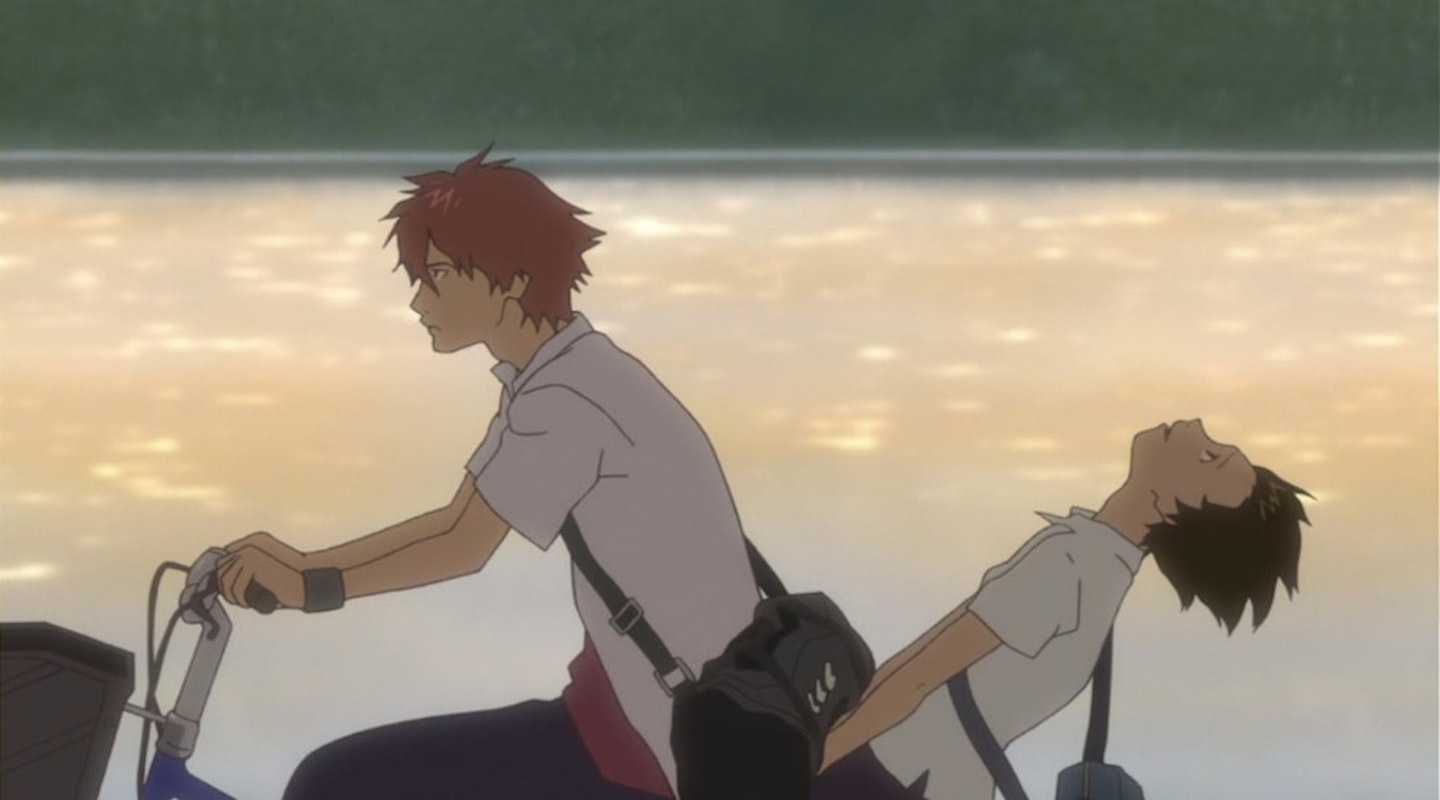
When high schooler Makoto Konno gains the ability to travel through time, she initially sees it as a way to engineer her idea of a perfect life – retaking exams, improving her social standing, and avoiding awkward romantic entanglements. Unfortunately, just as she realises that her leaps through time are causing others to suffer, she also learns she only has a few leaps left to fix everything. A reimagining, rather than direct adaptation, of author Yasutaka Tsutsui's classic 1960s sci-fi novel, The Girl Who Leapt Through Time is a not only a gorgeous piece of animation, but a poignant examination of free will and the spontaneity of life. Although director Mamoru Hosoda had already made his feature directorial debut with some Digimon and One Piece franchise flicks, The Girl Who Leapt Through Time was where he truly cemented his standing as one of Japan's most talented and insightful creators.
5) Grave of the Fireflies (1988)
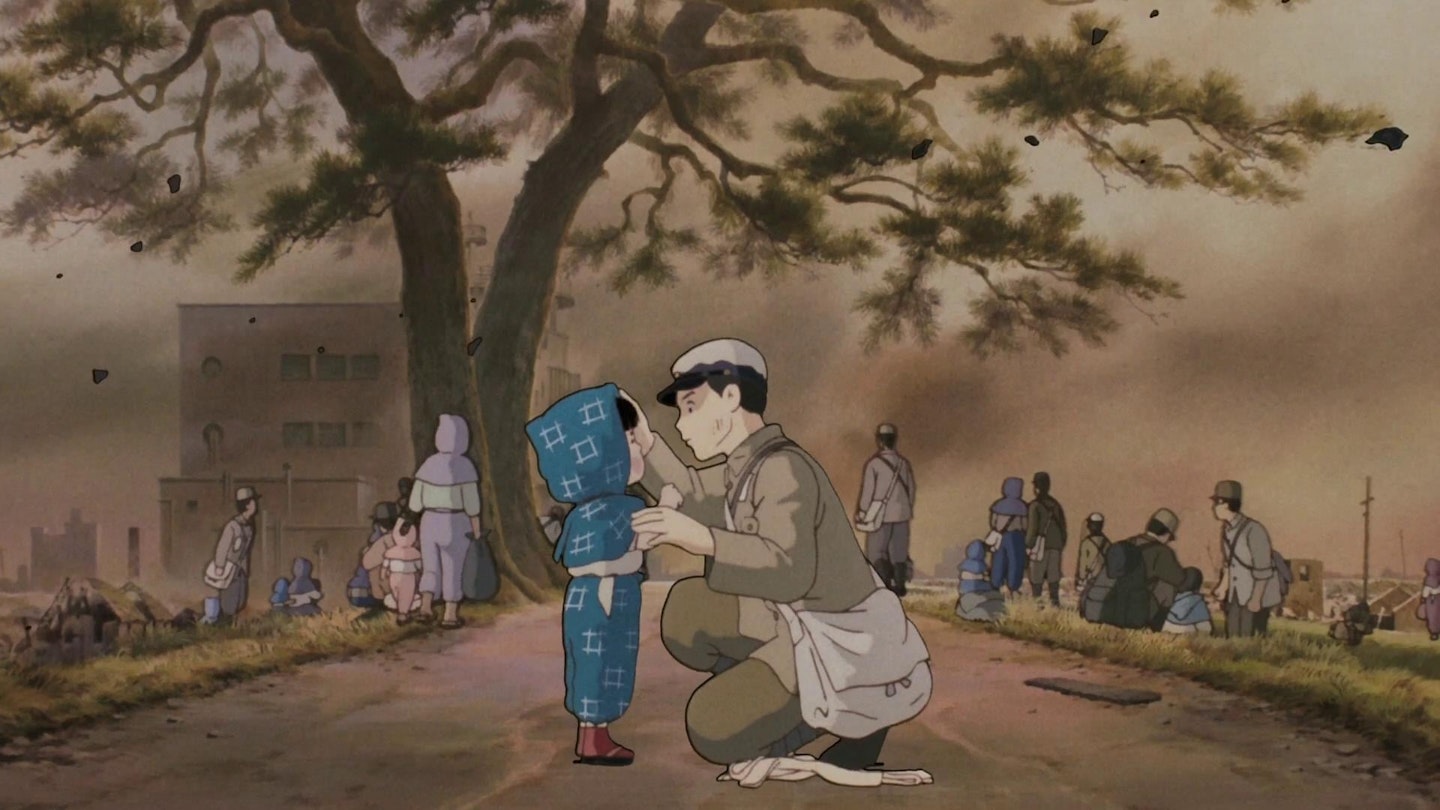
An utterly harrowing child's eye view of Japan at the end of World War II, Grave of the Fireflies follows Seita and his younger sister Satsuko, orphaned after an American firebombing on Kobe. Desperate to protect Satsuko, Seita initially seeks support from extended family, only to be manipulated and eventually discarded – and things only go downhill from there. Yet somehow, between countless tragic scenes of sheer emotional devastation, there are small moments of beauty to be found, even when things are at their darkest. A far cry from Studio Ghibli's typically whimsical, endearing output, Isao Takahata's examination of shared national trauma remains perhaps its singularly most important work – a searing tale of desperation, catastrophe, and grief.
4) Millennium Actress (2002)
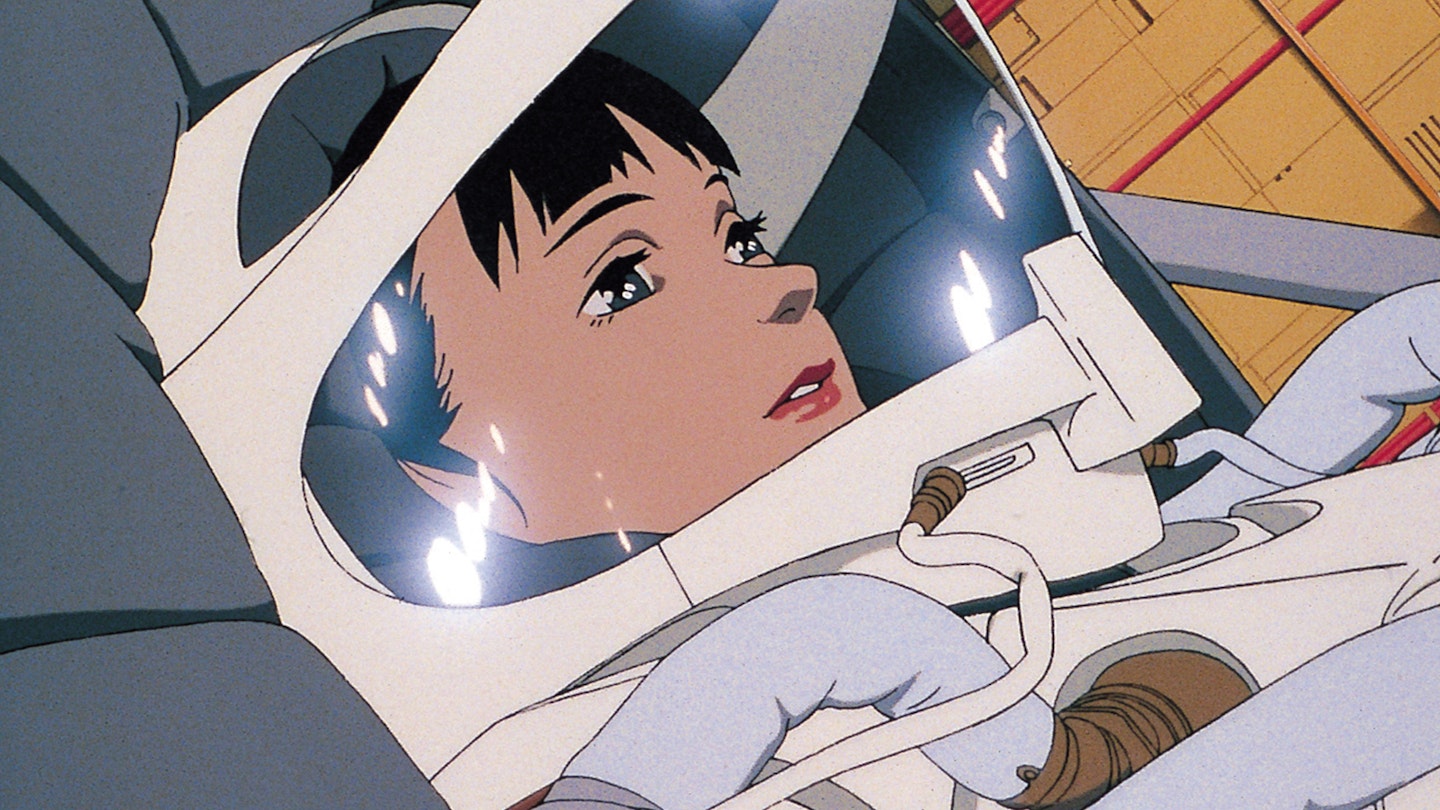
Thirty years ago, renowned actress Chiyoko Fujiwara retired, and took up a reclusive life far from the cameras and fame she once lived for. Now, documentary makers Genya and Kyoji track down the elusive star for a retrospective interview on her career – a story that spans decades, and weaves the aspiring filmmakers into Chiyoko's life and numerous acting roles as her recollections blur the line between screen and reality. Satoshi Kon's follow-up to Perfect Blue – and his last cel-animated work – saw him elevate his considerable talents with a love letter to not just cinema, but specifically Japanese cinema, using Chiyoko's story to present the glories of samurai era jidaigeki, special effects-laden tokusatsu, and giant monster kaiju films in exquisite animated form. If you love film, you can't help but love Millennium Actress.
3) Spirited Away (2001)

When young Chihiro unwittingly steps into a twilight world where humans should not venture, even her name is taken from her. Now known as Sen, she finds herself forced to work at a magnificent supernatural spa, catering to the mercurial whims of yōkai and spirits even as she struggles to reclaim her identity and return to the life she once knew. Miyazaki's dreamlike fantasy world, rooted in a mixture of Shinto and Buddhist imagery, is one of his most compelling creations, turning a coming-of-age fable into something with unexpected depth and meaning – no surprise that it netted him his first Academy Award for Best Animated Feature. With its loose structural similarities to Alice in Wonderland and The Wizard of Oz, Spirited Away is also the perfect entry point for Western audiences unfamiliar with Studio Ghibli – or anime as a whole – and will undoubtedly leave them wanting more.
Read the Empire review here.
2) Akira (1988)
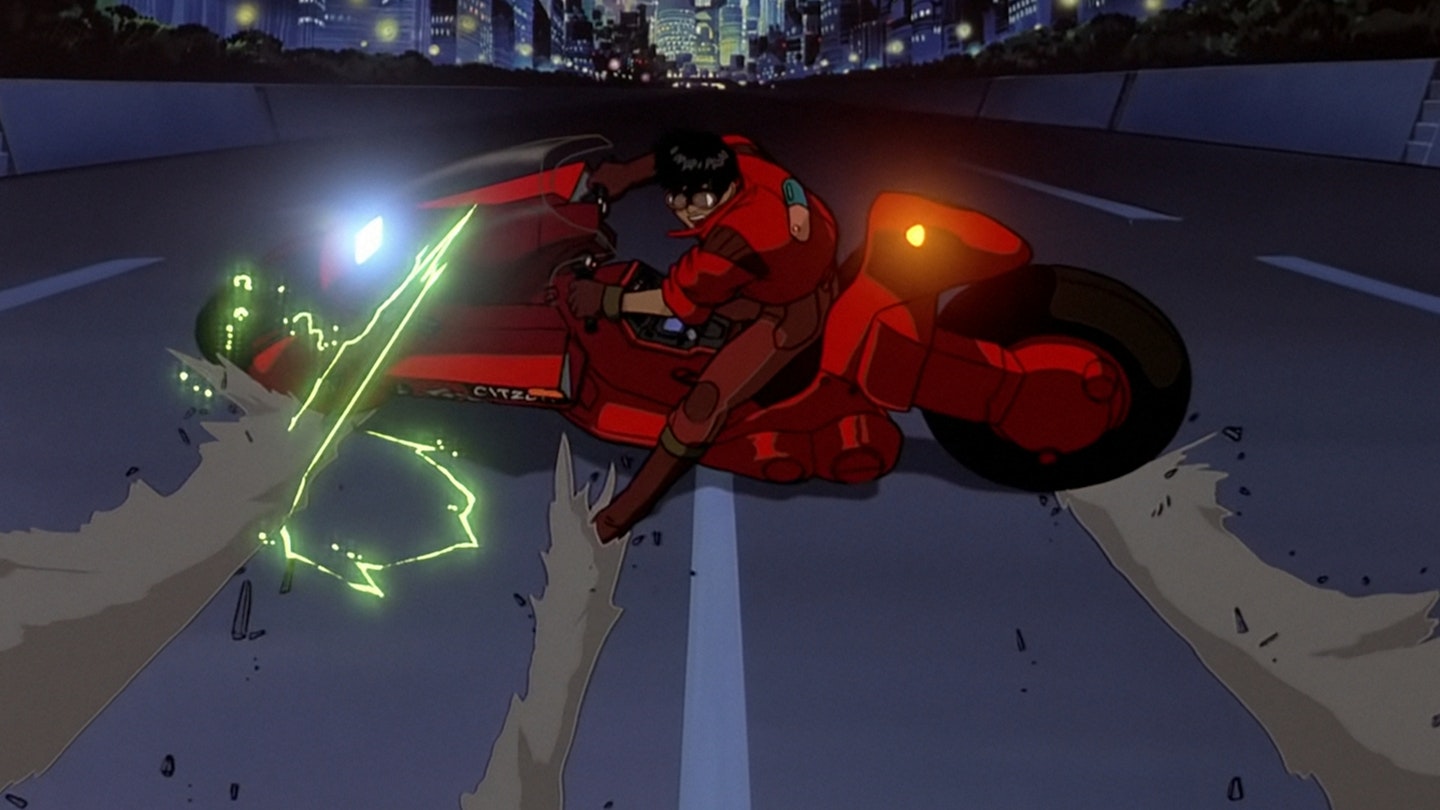
A dark vision of a broken future, Akira grabs viewers by the throat from the off, dragging them along on a brutal opening brawl between biker gangs on the streets of post-apocalyptic Neo Tokyo – culminating in protagonist Kaneda's iconic "bike slide", one of the most homaged shots in animation history. In its wake, Kaneda's best friend Tetsuo is awakened to vast telekinetic powers, an evolution that could destroy the world for good. Katsuhiro Otomo's staggeringly ambitious adaptation of his own earlier 1982 manga (which was still being published at the time, leading to some major differences between the two) dazzled with a mix of intricate urban landscapes, astounding detail – think painstakingly animated shards of shattered glass – and frenetic action that set a new standard for what could be done in animation. Even as the medium has shifted to digital production, it's a standard that has rarely been matched since. It's no exaggeration to say that Akira changed the world.
Read the Empire review here.
1) Princess Mononoke (1997)
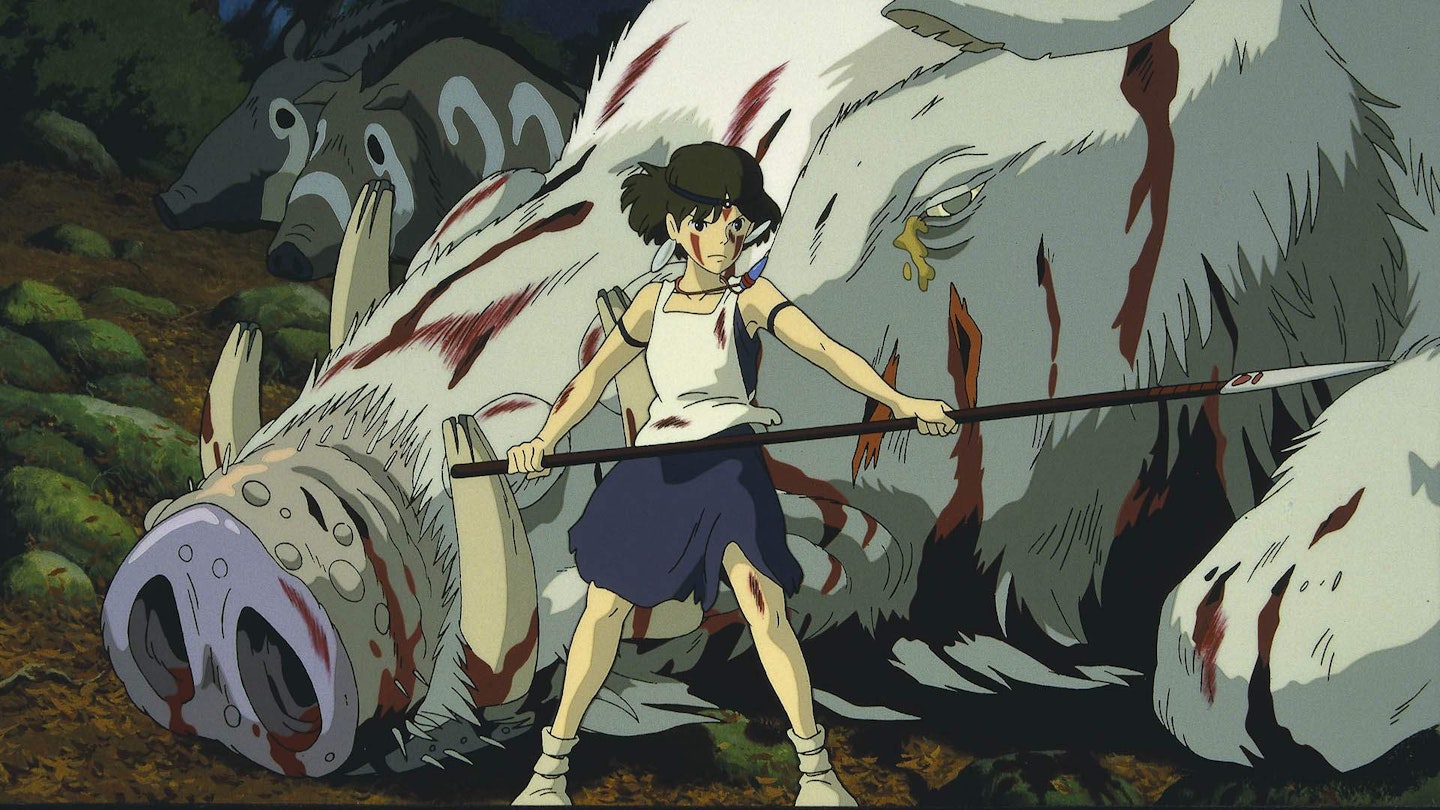
The delicate balance between humanity and the natural world is perhaps the paramount theme of Hayao Miyazaki's work, and nowhere is that more apparent than in this spectacular dark fantasy epic. Set in the 13th century, Princess Mononoke follows Prince Ashitaka, exiled from his village after being cursed by a rampaging demon. Tracing the beast west in search of a cure, Ashitaka finds himself caught between San, a human girl raised by wolf gods and protector of the forest, and Lady Eboshi, an industrialist stripping the forest to mine for iron ore – but in turn providing a home and purpose for society's outcasts. Throughout, Miyazaki rejects a simple good-evil binary and refuses to side with either of his heroines, instead presenting the hidden beauty of both worlds – whether the inquisitive spirits and awesome gods inhabiting the woods, or the warmth and community of Eboshi's Iron Town – and challenging audiences to come to their own conclusions. The result is a deeply complex, morally nuanced work that feels increasingly relevant to our ecologically desperate times. That it's also a creation of almost unparalleled personal dedication on Miyazaki's part – he's said to have personally drawn or retouched around 80,000 of the film's 144,000 cels – and features one of composer Joe Hisaishi's finest scores only helps to establish Princess Mononoke as the pinnacle of Anime features.
Read the Empire review here.
